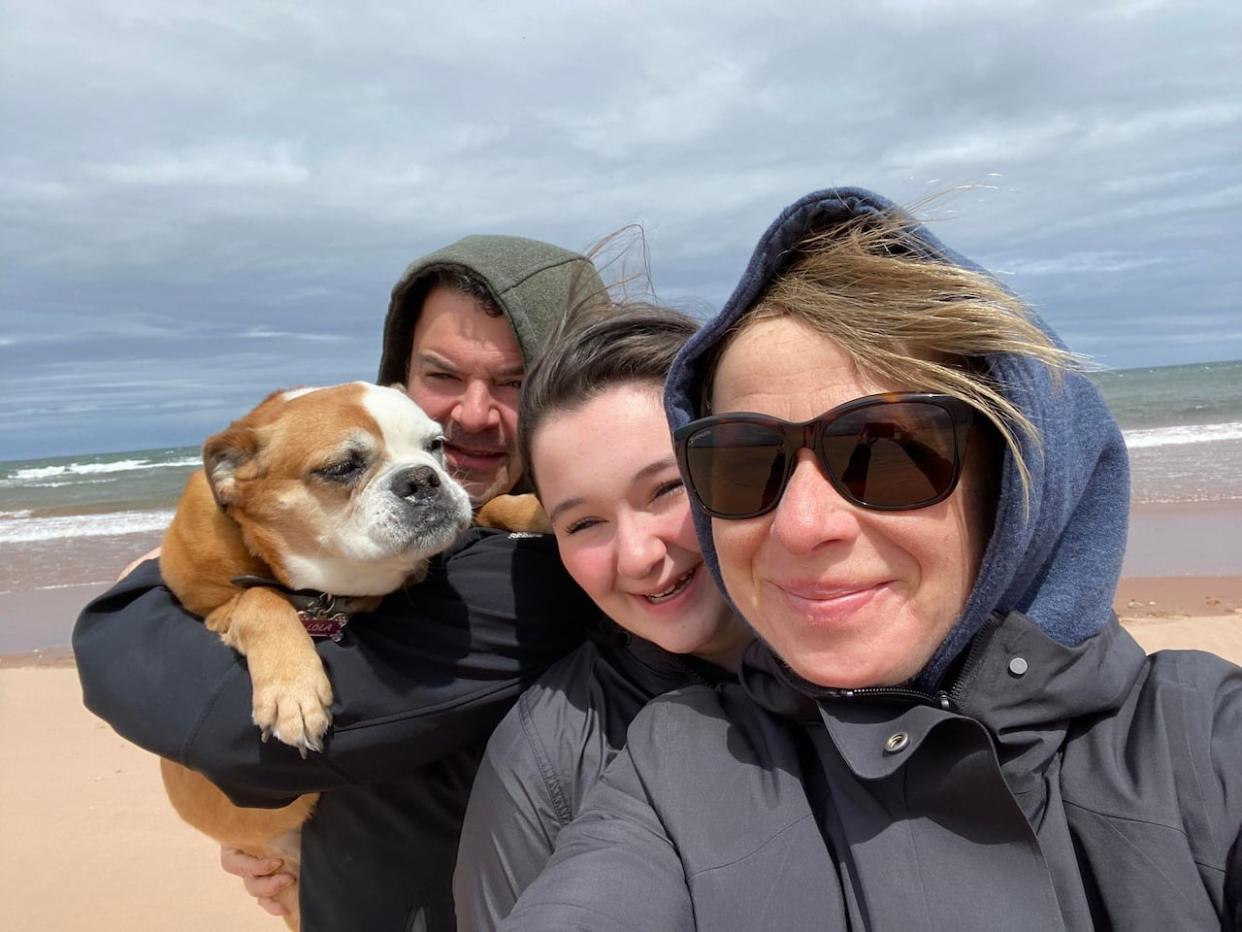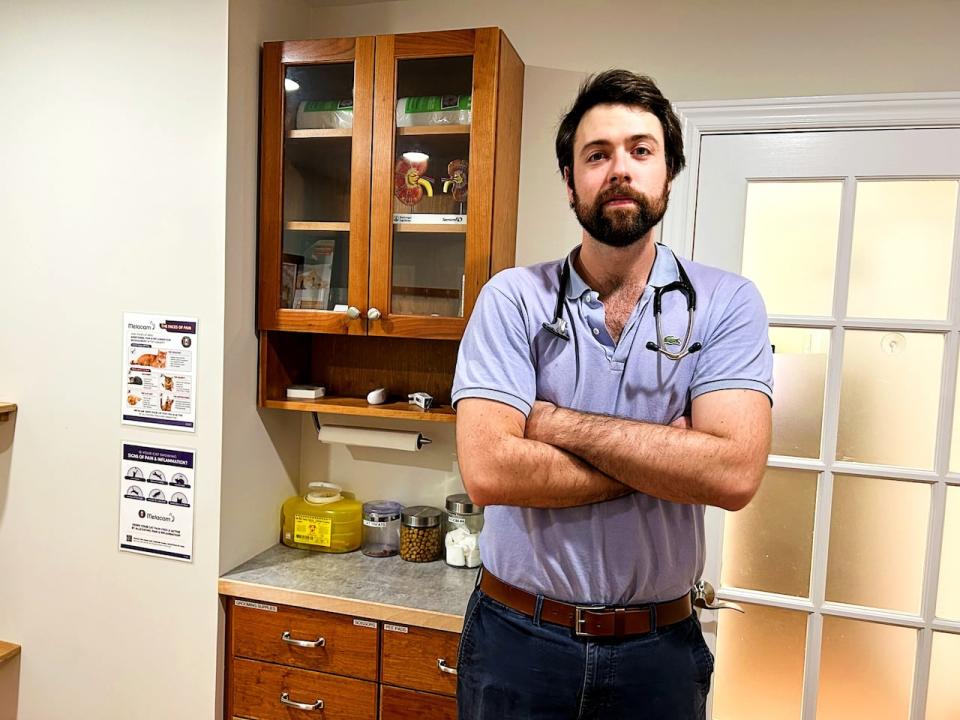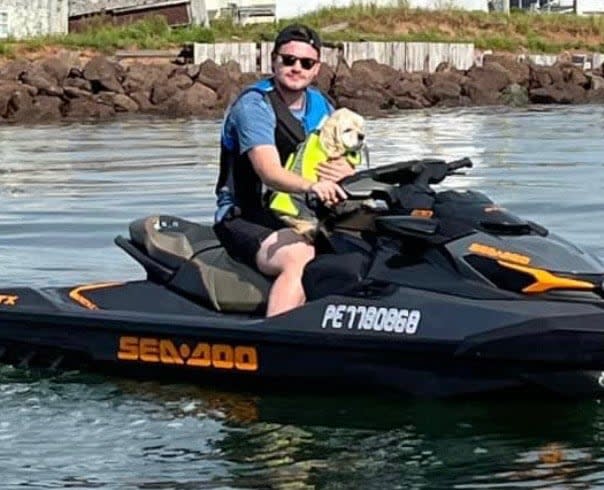A 'tough' decision: When it's time to say goodbye to a family pet

Lola loved chasing bubbles in the backyard. But in the end, the Valley bulldog would only sit and watch them float by before bursting on their own.
Put a hard-boiled egg in her dish and she'd just sniff it and hobble away, showing no interest in eating even her favourite treat.
She was lethargic, losing a lot of weight.
Eleven months after she had been diagnosed with congestive heart failure, her owner knew he was facing the heartbreaking but inevitable decision to put his dog down.
"It was the right decision," said Charlottetown resident John Dow. "She could hardly walk, but even though she was not sharp, you know, she looked at you with her big brown eyes… and then again, you just look at her walking and she could barely put one paw in front of the other. So it was tough."
It's never easy to say goodbye to a cherished family pet, said Dr. Stewart Higginbotham, a vet at the Charlottetown Veterinary Clinic.
The decision is more clear-cut if the animal has suffered a serious sudden illness such as a twisted stomach or a bleed in the abdomen, and emergency care is not possible to stop the immediate suffering.

Dr. Stewart Higginbotham says euthanasia should be performed by a veterinarian to ensure the animal dies peacefully and without complication. (Shane Ross/CBC)
Higginbotham said the decision becomes more nuanced when the pet has a slower, chronic disease such as progressive organ failure or age-related mobility and cognitive issues. That's when vets have the discussion about the pet's quality of life.
Has it stopped eating on its own, even with medication? Is it constantly nauseated, throwing up or having diarrhea? Is it in pain that can't be managed effectively?
"We also want owners to focus on more subtle changes of, say, how their pet's acting at home," Higginbotham said.
If they're not wanting to play, if they're not finding joy in any of the things that they used to enjoy, it can be time to start thinking about a peaceful end for them. — Dr. Stewart Higginbotham
"They're becoming more reclusive. If they're not wanting to play, if they're not finding joy in any of the things that they used to enjoy, it can be time to start thinking about a peaceful end for them."
According to P.E.I.'s Animal Welfare Act, it is not illegal for pet owners to perform euthanasia on their animals themselves — providing they have training, experience or knowledge of the correct procedures and perform them in accordance with the humane standards outlined in the act.

Teddy, playing in the snow with his owner Pamela Large Moran, had a pacemaker put in about two years ago. (Submitted by Pamela Large Moran)
However, Higginbotham said euthanasia should be left to a veterinarian if possible, to make sure nothing goes wrong.
"The way that we perform euthanasia is using anesthetic medications, which relax the animals and then stop their heart and brain function in a non-painful, peaceful way compared to any procedures at home [that] would not be pleasant or good for the animal," he said.
"Most of us would be very happy to discuss things with you and help you come up with a plan for how you as a family or you as a person will decide when it's time — with no judgment, just helping you do what's best for your animal."
'Very, very peaceful'
Pamela Large Moran took her 13-year-old cocker spaniel Teddy to Higginbotham in November after the dog started to deteriorate quickly. Teddy had cheated death two years before when he had a pacemaker put in, but now he was dealing with a tumour on his spleen and kidney.
Large Moran had hoped he would at least make it through the Christmas season with the family. But soon he would eat nothing but ice cubes and chicken broth, and they were feeding him protein through a syringe.
I never imagined that I would want to be in the room, but it was actually very, very peaceful. — Pamela Large Moran
"When we started to see him going downhill, we just really made a point to be home, to be with him a lot," Large Moran said.
"I often got down on the floor with him on his big bed and just cuddled him. And you know, he sat on my husband's knee in the recliner chair watching TV… He knew we were there."
When it became clear Teddy wasn't going to get better, they took him to be euthanized. From a private room at the vet clinic, they called their sons on a video chat so that the whole family could say goodbye.

Teddy loved being on the water, even going for rides on a Sea-Doo. (Submitted by Pamela Large Moran)
Higginbotham and the other vets made them all feel at ease, Large Moran said. Then Teddy received his injection.
"I never imagined that I would want to be in the room, but it was actually very, very peaceful," she said. "We were talking to Teddy. He was sitting on my husband's knee just how we often, you know, did in his bed."
The last decision
There's one more decision for pet owners after euthanasia. They can take the animal's remains with them, or have them cremated. Large Moran chose to bury Teddy's body with his favourite toy near their cottage on P.E.I.'s North Shore, where he liked to fetch sticks thrown out into the water and ride on the Sea-Doo.
The family has decided they will get another dog some day, while cherishing their memories with Teddy.
Dow is still unsure, though. This is the first time his family has been without a pet in their home for about 19 years, and they're still getting used to life without Lola.
"She'd run to us when we came home. She'd always like to go for a walk. She loved playing with the summer bubbles," he said. "She was a family member."

